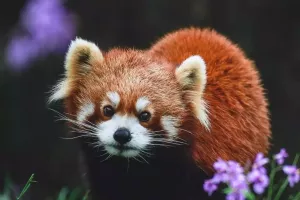The Fastest Beast
Known for its breathtaking speed and distinctive spots, the cheetah is the fastest land animal on Earth. From its tear-streaked face to its spotted coat, this lanky and athletic big cat has mastered camouflage. It has a body engineered to race through the grasslands to take down prey.
Unlike other big cats, cheetahs aren't always solitary and they never roar. In fact, they sound more like your friendly house cat and are even known to meow and purr. Explore the most interesting facts about this well-known speedster.
1. Cheetahs are the fastest land animal in the world
These cats are fast. They can typically reach speeds of up to 98 kilometers per hour (61 miles per hour) and can go from 0 to 60 Mph in just 3-seconds, which is faster than most super-cars. Their stride length becomes as long as 7m (23ft) at full pace, which means the cheetah spends more than half the time airborne.
2.They are built for super speed, rather than stamina
A cheetah chase usually lasts less than a minute and covers just 200-300 meters. At full speed, the cheetah takes three strides a second, covering seven meters per stride - it's not surprising they tire quickly, and conserve energy for much of the time. One study found that cheetahs spent only 12% of their day moving around.
3. Cheetahs Don’t Roar, They Meow and Purr
There’s nothing scary about the noises a cheetah makes. Unlike lions, which are known for their ferocious roars, cheetahs sound more like your average house cat. They meow and purr. They also make chirps and churring sounds. Listen to some of the chatty cheetahs from the Toronto Zoo. There are four big cats that roar: lions, tigers, leopards, and jaguars. They are able to make their intimidating noises because they have a ligament instead of the epihyal bone in the voice box. The ligament stretches, creating lower sounds. Cheetahs have a fixed voice box with divided vocal cords. Like “small cats,” it allows them to purr but limits the noises they can make.
4. Cheetah cubs have a very different coat to that of adults
The cubs have a smoky colored, long, wooly coat called a mantle. It runs down their backs and acts as a form of camouflage. It helps to conceal the cubs and their mothers assist in this by constantly seeking places to ‘hide’ them to protect the cubs from predators until they are old enough to take care of themselves.
5. The name cheetah comes from a Hindi word, chita, meaning 'spotted one'
The spot patterns are unique to each cat and help to provide camouflage when hunting. But not every cheetah has spots. In rare cases, a recessive gene produces a more blotchy coat that blurs into stripes. These so-called 'king cheetahs' may not look like the spotted kind, but they only differ by one gene.
6. Their Eyes Help Them Hunt
Unlike most other big cats, cheetahs hunt in the daytime, generally in the early morning or late afternoon. They climb a termite mound or small hill and use their sharp vision to locate prey, then it's off to the races. The cheetah uses its lightning speed to go careening after its dinner, knocking the prey to the ground and then latching on to its throat. They tend to eat their prey right away to avoid losing it to competitors. Cheetahs have distinctive dark tear-mark lines that run from the corners of their eyes down to their mouth. These marks deflect the sun, making it easier for the cats to hunt during the day. Without the sun's glare, they're able to zero in on their targets, according to the Cheetah Conservation Fund.







